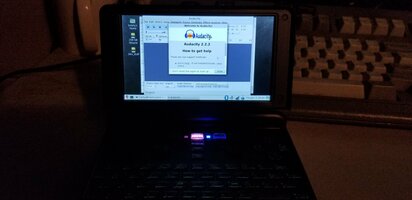This can be related to some weird audio mixing / channel mapping.I've not been able to reproduce it the same way as yesterday yet, but there has been similar behavior under load at least. Nothing keyboard related, moving windows around made it quieter (extra load from compositor if I had to guess). After a bit of messing around, the volume isn't really coming back either. Sometimes the right speaker is a good bit quieter than the left one for short bursts during this as well.
No visible changes in AlsaMixer, nothing for the balance either.
No changes from pressing around the case, though right now keyboard input doesn't affect anything either.
This is kinda weird and inconsistent, but doesn't look like it's hardware at least.
While this does appear to happen under load, it's not like the audio itself ever cuts off or stutters when it happens. Yeah, this is probably not that helpful after all, but something is up.
I already mentioned to aTc during the tester that it sounds as if the audio is coming from both speakers whenever I only play from the left one (as I'm sine waves for testing, this could've been my imagination and I've not further checked it yet).
We're not using the hardware audio mixing feature of the chip yet - so there's only one ALSA device with four channels. The first two are the headphones, the second two the speakers.
Who knows what ALSA makes of that... maybe it tries to do some 5.1 mixing with these four speakers and tries to create a virtual center?


